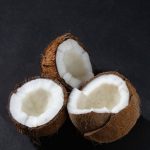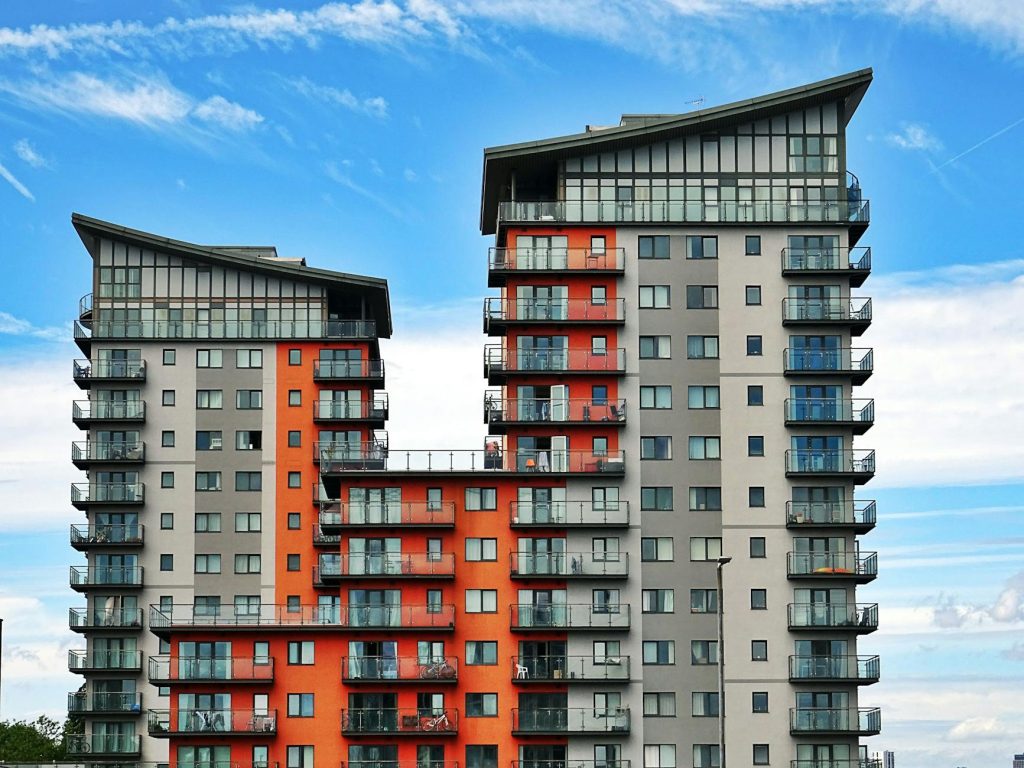Buying a car in the Dominican Republic can be an adventure, especially if Spanish is not your first language. In this blog post, we’ll dive deep into the experience of purchasing both used and new cars in the DR, from the perspective of someone who did it first as a non-resident foreigner and later as a legal resident. Along the way, we’ll learn lots of useful Spanish vocabulary – from casual phrases you’d use at a dealership to the formal terms you’ll see on paperwork. This is a comprehensive guide (no listicles here!) that will walk you through buying a used car in Santiago, buying a new car in Santo Domingo, dealing with insurance, asking about a car’s history (accidents, mechanical problems, even whether it’s a “flood car”), and exploring financing options. ¡Vamos! (Let’s go!)
Antes de Empezar: An Overview and Initial Considerations
Buying a car in the DR has its quirks and specific processes, but one thing is for sure: yes, you can purchase and register a car even if you’re not a Dominican resident dominicantoday.com. When I first arrived in the country, I didn’t have my residency or a local ID (cédula), yet I was able to buy a vehicle in my own name. Dealerships and private sellers generally do not require a cédula to sell you a cardominicantoday.com – your passport and foreign driver’s license are usually enough for the sale. However, owning the car is one thing; legally driving it is another. Without a Dominican driver’s license or residency, you’re only permitted to drive on a foreign license for a limited time (about 90 days after each entry)dominicantoday.com. After that period, you risk fines or even having the car impounded if caught driving without local driving credentialsdominicantoday.com.
So, if you plan to stay long-term, obtaining your residency (residencia) and Dominican driver’s license is the logical next step dominicantoday.com. I eventually went through that process – getting my cédula (national ID) and then the local license – which made life much easier. We’ll talk more about the differences antes y después de la residencia (before and after residency) later on. But first, let’s jump into my experience buying a carro usado (used car) in Santiago as a newcomer, and learn some Spanish phrases for the journey.
Buying a Used Car in Santiago (Before Residency)
When I first moved to the Dominican Republic, I was based in Santiago, the country’s second-largest city. Public transport and motoconchos (motorcycle taxis) were available, but I wanted the freedom of my own wheels to explore the island. Being new and without residency, I decided to buy a carro usado (used car) for affordability and ease. Santiago and its surrounding areas (like Moca) are known for a bustling used-car market – in fact, some say many of the best used car dealers (“agencias de carros usados”) are in Santiago and Moca, though one should be careful as the chance of getting a lemon is high expat.com. Another perspective I heard from expats is that used cars in Santiago can be a bit overpriced (sobrevalorados) compared to the capital expat.com. For example, a 2017 Honda CR-V might cost close to $40,000 in the Cibao region (around Santiago), whereas the same car in Santo Domingo could be around $35,000 expat.com. The market varies by region, so it pays to shop around.
Buscando el carro perfecto (Searching for the perfect car)
To start my search, I browsed popular local listing sites like Corotos and SuperCarros (the DR’s equivalent of Craigslist or AutoTrader for vehicles) for used cars in my budget. I set my sights on a reliable used SUV – or as Dominicans call that type of vehicle, a “jeepeta” (yes, the word jeepeta is Dominican slang for an SUV or any large family car, derived from “Jeep”). Here’s a little local vocabulary tidbit: in the DR, carro is the general word for car (more common than “coche”), an SUV is often jeepeta, and a pickup truck is camioneta. Knowing these terms helped me refine my search. I was looking for a medium-sized jeepeta usada (used SUV) with good clearance for rough roads, since I planned to take road trips.
I found a promising listing at a dealership (concesionario) in Santiago. I gave them a call and set up a time to see the vehicle. This is where my Spanish immersion truly began. Walking into the dealership lot, I was greeted by a smiling salesperson:
- Vendedor: “¡Buenas! ¿En qué puedo ayudarle?”
(Salesperson: “Hello! How can I help you?”)
I introduced myself and explained what I was looking for:
- Yo: “Buenas tardes. Estoy buscando un carro usado, preferiblemente una jeepeta, que sea económica pero confiable.”
(Me: “Good afternoon. I’m looking for a used car, preferably an SUV, that’s economical but reliable.”)
The salesperson immediately switched to show me a couple of options. We walked over to a used Toyota RAV4 (I won’t mention the actual dealership name for privacy, but let’s just say it was a typical mid-sized SUV on the lot). As we approached, I made sure to ask some important questions in Spanish:
- Yo: “¿Cuántos dueños ha tenido este vehículo?”
(Me: “How many owners has this vehicle had?”) - Yo: “¿Tiene algún problema mecánico conocido o ha tenido accidentes previos?”
(Me: “Does it have any known mechanical issues or has it had any previous accidents?”)
These questions are crucial when buying a used car anywhere, and the vocabulary is useful:
- problema mecánico – mechanical problem
- accidentes previos – previous accidents
- dueños – owners (dueño = owner)
The salesman assured me that the SUV had only one previous owner (“solo un dueño anterior”) and that it had never been in a serious accident.
To dig a bit deeper, I asked another question I had learned was important in the Dominican context:
- Yo: “¿Este carro es importado de los Estados Unidos? ¿Ha sufrido daños por inundación?”
(Me: “Is this car imported from the US? Has it suffered flood damage?”)
This might seem like an odd thing to ask, but it’s actually very relevant. A large number of used cars for sale in the DR are imported from the U.S., sometimes after hurricanes or accidents, and are repaired here. A car that was “inundado” (flooded) or “vehículo de salvamento” (salvage vehicle) could have hidden issues like electrical problems or engine corrosion. Locally, a flood-damaged car is colloquially called a “vehículo ahogado” (literally “drowned vehicle” – an apt term). In fact, there have been warnings to Dominican buyers about cars that suffered flood damage in the US and then were brought to the DR 7dias.com.do. Such cars might look fine but could carry long-term problems. The dealer told me this particular SUV was “local” (originally sold in the DR, not an import) and had no flood damage.
Vehicles submerged in floodwater – known in Dominican Spanish as “vehículos ahogados” – often end up back on the used car market. Be cautious and ask about a car’s history if it was imported 7dias.com.do.
Next, it was time to inspect and probar el carro (test the car) – in other words, take it for a test drive. I wanted to ensure everything felt right. I asked:
- Yo: “¿Puedo hacer una prueba de manejo?”
(Me: “Can I take it for a test drive?”) - Vendedor: “Cómo no, claro que sí. Aquí tiene las llaves.”
(Salesperson: “Of course, no problem. Here are the keys.”)
That phrase “prueba de manejo” is the common way to say test drive (literally “driving test”) in Spanish. Sometimes people also say “dar una vuelta” (take a spin). The salesperson joined me in the car and we drove a few blocks around the dealership. Along the way, he highlighted features in Spanish, and I got a mini Spanish lesson on car parts:
- “Este modelo tiene cámara de reversa (backup camera) y sensores de parqueo (parking sensors).”
“El motor es de cuatro cilindros, muy económico en gasolina (fuel-efficient).”
“Tiene transmisión automática (automatic transmission) y tracción en las cuatro ruedas (4-wheel drive), ideal para los caminos aquí.”
I listened and made mental notes of all these terms. It was a lot of new vocab at once, but hearing it in context helped it stick.
Negociando el precio (Negotiating the price)
After the test drive, I was pretty satisfied with the vehicle. Now came the delicate part – negotiating the price. In the Dominican Republic, particularly for used cars, la negociación es común (haggling is common). The sticker price isn’t always the final price. I asked the dealer:
- Yo: “¿Cuál es el mejor precio que me puede ofrecer por este carro?”
(Me: “What’s the best price you can offer me for this car?”)
He countered by asking how I’d be paying. I told him I was planning to pay al contado (in cash, meaning a one-time full payment, not literally cash bills, since I’d likely do a bank transfer – more on that shortly).
He gave me a slight discount from the listed price, but it was clear this dealership wasn’t going to budge a whole lot. I tried one more tactic in Spanish:
- Yo: “¿Me puede incluir el primer mantenimiento o algo extra? Quizá el llenado del tanque?”
(Me: “Can you include the first maintenance or something extra? Maybe a full tank of gas?”)
He chuckled and agreed to fill up the tank and throw in new floor mats. Sometimes if the price itself can’t be lowered much, you can get small perks. It wasn’t a huge win, but hey, a free tank of gas in an SUV is nothing to scoff at.
One thing to note: car prices in the DR might be listed in Dominican pesos (DOP) or in US dollars (dólares). In my case, the SUV’s price was advertised in dollars. I made sure to clarify the currency and the exchange rate if needed. As an expat, you sometimes think in USD, but living day-to-day in the DR means dealing in pesos. Car dealers will accept either currency, but if the car is listed in pesos and you try to pay in USD (or vice versa), you’ll need to agree on an exchange rate to avoid confusion expat.com. The dealership I was at had the price in USD and was happy to get USD or equivalent DOP. I decided to pay in pesos using a bank transfer.
A quick tip for expats: Transferring a large sum of money for a car purchase should be done through a local bank if possible. It’s not wise (and may not even be possible) to show up with huge amounts of cash – not to mention dangerous and sometimes dealers won’t take large cash due to security. I had already opened a Dominican bank account, which made things easier. In fact, some experienced expats advise never traveling with or withdrawing that much cash – use the banking system to handle it expat.com.
El papeleo de la compra (The paperwork for the purchase)
With the price agreed and payment arranged, we moved on to paperwork – el papeleo. Even on the informal, conversational side of buying a car, there’s still documentation to fill out, especially to transfer the vehicle’s title to me. Here’s some vocabulario that came up during this stage:
- Contrato de compraventa: the purchase-sale contract. The dealer had a standard contrato de compraventa prepared. It basically states the details of the vehicle, the buyer, the seller, and the price. In my case, since I didn’t have a cédula, they used my passport details on the contract. I had to sign this contract, and so did the representative of the dealership. Often, this document is notariado (notarized) and sometimes later legalizado (legalized) by a notary public or lawyer. Actually, by law, a notarized contract is required to officially transfer a vehicle’s title in the DR ayuda.dgii.gov.do.
- Matrícula: the vehicle registration document, essentially the title. The matrícula is a small card (looks a bit like a registration card) that proves ownership. The dealer had the original matrícula from the previous owner and would handle the process of traspaso (transferring the title to my name). To do a traspaso, one needs the notarized sales contract, the original matrícula, and some official certifications (like a police clearance that the car isn’t stolen) and pay the transfer tax to the revenue authority (DGII) ayuda.dgii.gov.dofc-abogados.com. As a buyer, my main job was to provide my ID and sign where needed; the dealer, for a fee, took care of submitting the paperwork.
- Copia de cédula / pasaporte: a copy of the ID of both buyer and seller is required. In this case, I provided a copy of my passport (and ensured my tourist visa was stamped in it to show I was in the country legally). If you have a cédula, you’d use that. The dealer provided copies of their legal rep’s ID, etc.
- Certificado de no robo / certificación policial: This is a document from the police (sometimes called “certificación del plan piloto”) that verifies the vehicle isn’t stolen and has no legal impediments. The dealership handled this as part of the transfer process. It’s analogous to getting a carfax report, but through the authorities – basically ensuring a clean title. In some references, I’ve seen it called “certificado de no objeción” which is likely the same idea – a certificate that there’s “no objection” to transferring the vehicle, meaning no outstanding liens or theft records es.linkedin.comes.linkedin.com.
The sales contract was in Spanish, of course. It was a good reading exercise for me – terms like “el Comprador” (the Buyer – me), “el Vendedor” (the Seller – the dealership), “vehículo descrito” (described vehicle), and the clauses about the condition of the car (usually “as is”, “en el estado en que se encuentra”) etc. Thankfully, it was a straightforward deal: the car was out of warranty due to being used, and I was buying it “tal cual” (as is).
I signed all the documents, and we proceeded to finalize payment. I did an online transfer from my Dominican bank to the dealership’s account for the agreed amount in pesos. It took a short while to confirm, but soon it was done – ya el carro era mío (the car was mine now)!
Seguro: Getting Insurance Before Driving Off
Before I could drive off into the sunset with my “new” used car, I had one more essential task: seguro de auto (car insurance). In the Dominican Republic, car insurance isn’t just a good idea – it’s legally required by the constitution and traffic law that every vehicle have at least a basic insurance policy mapfrebhd.com.do. The minimum is the so-called “seguro de ley” (literally “insurance of law”), which is the mandatory liability insurance. This covers damages or injuries you may cause to others. The dealer strongly advised me to get insurance immediately, and even recommended a local insurance broker who could set it up on the spot.
Since I was new in country, I opted for a more comprehensive coverage, commonly referred to as “seguro full” (full insurance), which includes collision, theft, and other coverages beyond just liability. Here’s how the conversation went with the insurance broker (who conveniently came over to the dealership office):
- Agente de seguros: “¿Tiene cédula dominicana o pasaporte?”
(Insurance agent: “Do you have a Dominican ID or a passport?”) - Yo: “Pasaporte, todavía no tengo cédula.”
(Me: “Passport, I don’t have a cédula yet.”) - Agente: “No hay problema. Le podemos hacer la póliza con el pasaporte. ¿Qué cobertura desea, seguro de ley o full?”
(Agent: “No problem. We can make the policy with the passport. What coverage do you want, basic mandatory or full?”) - Yo: “Quiero un seguro full, por favor, con cobertura contra accidentes, robo, inundación, todo.”
(Me: “I want full coverage, please, with coverage against accidents, theft, flooding, everything.”)
I specifically mentioned inundación (flooding) because, well, after worrying about flood cars, I also worried about flood damage happening in this tropical country! The agent understood. We went through the details and paperwork for the insurance. I learned some insurance vocabulary:
- póliza – policy (the insurance policy document)
- prima – premium (the cost of the insurance, though prima also means “female cousin” in another context, here it’s the insurance term)
- deducible – deductible
- cobertura – coverage
Within an hour, I had insurance in place. The policy was emailed and a temporary slip given. Now I was truly ready to hit the road.
Driving out of the dealership, I felt both excited and a bit nervous. Not only was I now the owner of a car in a foreign country, but I also had just navigated the whole process in Spanish. Talk about a crash course (pun intended) in language and local bureaucracy! In the first few weeks, I kept documents in the car: a copy of the matrícula (still in previous owner’s name until the transfer completed), a letter from the dealer stating the transfer was in process, my insurance papers, and of course my passport and foreign driver’s license.
Over the next couple of months, I received my new matrícula with my name on it, and I also made sure to get the car’s marbete (annual vehicle tax sticker) updated when the time came. The marbete is a sticker on the windshield that proves you paid the yearly circulation tax – it cost me about RD$1,500 since the vehicle was over 5 years old (newer vehicles pay around RD$3,000)expat.compresidencia.gob.do. Keep that term in mind: Impuesto de Circulación (Marbete) – you must renew it every year, usually by the end of December for the next year, otherwise you get a fine.
With my used carro in hand, I was ready to explore the Dominican Republic, and I also had a bunch of new Spanish words and phrases under my belt. It was a successful purchase. But my story doesn’t end there. Fast forward to after I obtained my residency and spent more time in the country, I decided to buy a carro nuevo (new car) in Santo Domingo. That was a different experience in some ways, especially with financing and paperwork, and it came with its own set of Spanish lessons.
Buying a New Car in Santo Domingo (After Gaining Residency)
A couple of years later, I found myself living in Santo Domingo (the capital city) and now I was a legal resident with a cédula and a Dominican driver’s license. My used SUV from Santiago had served me well, but I was ready for an upgrade – perhaps a brand-new car this time. Buying a new car (cero kilómetros or de paquete as some say, meaning “zero kilometers” or “brand new out of the package”) was the plan. The process had some similarities with my first purchase, but being a resident now opened up the possibility of financiamiento (financing) and made the bureaucratic parts smoother since I had local documentation.
De concesionario oficial (At an official dealership)
In Santo Domingo, you’ll find the official dealerships for all major car brands – Toyota, Hyundai, Kia, Ford, etc. I won’t name the dealer I went to (to respect privacy, let’s just say it was a well-known brand dealership on John F. Kennedy Avenue, which locals know is lined with car dealers). Walking into the shiny showroom, I was greeted by a sales rep. Time to practice more Spanish:
- Vendedora: “Bienvenido. ¿Está buscando algún modelo en específico?”
(Saleswoman: “Welcome. Are you looking for a specific model?”) - Yo: “Sí, estoy interesado en el modelo ____, año 2025, nuevo. ¿Tienen disponibilidad?”
(Me: “Yes, I’m interested in the 2025 ____ model, new. Do you have it available?”)
She confirmed they did have it in stock. We discussed colors and trim levels. I felt more confident this time, and being a resident, I casually handed over my Dominican driver’s license for the test drive instead of my foreign one. We took the new car for a short vuelta (spin) and I was sold on it. Now came the decision: pay cash (from the sale of my old car plus savings) or finance part of it? The car was quite pricey, and I was tempted to finance to not wipe out my savings.
Opciones de financiamiento (Financing options)
I asked the sales rep about financing:
- Yo: “¿Cuáles son las opciones de financiamiento y los requisitos?”
(Me: “What are the financing options and requirements?”)
She introduced me to the asesor de financiamiento (finance advisor) at the dealership. We sat down and went through the plans. Here’s what I learned about typical auto loans (préstamos de vehículo) in the DR:
- Usually, 20% down payment (inicial del 20%) is required for new cars, and around 30% for used cars, at least in many major dealerships dr1.com. In my case, for a new car, 20% was the minimum down payment. They even encouraged more if possible.
- The loan terms are generally shorter than what you might see in the U.S. While 5-year (60 months) loans exist, many people opt for 2-3 year terms due to interest rates. The advisor offered me options from 12 months up to 60 months, but of course the monthly payments on a 1-year loan were huge, so I was looking at 3 or 4 years.
- Interest rates (tasa de interés) can be quite high. I was quoted an annual interest rate that translated to roughly 1.5% per month. That doesn’t sound bad until you annualize it – around 18% APR. In some cases, especially for non-residents or those with no credit history, interest could be even higher. I’ve heard of rates like 2.5% per month (which is ~30% annual!) for foreigners without credit expat.com. Essentially, bank financing for cars in the DR is expensive compared to, say, the U.S. or Europe. The mensualidad (monthly payment) on a financed car here will be steep unless you put a lot down.
- Credit checks: Since I was now a resident with a bank account, the dealership’s financing (through a partner bank) would check my historial de crédito. Having only a short credit history in the DR (basically my credit card and bank account of 2 years), they said I might need a garante (guarantor) or fiador – someone (a Dominican or a resident with strong credit) who co-signs the loan – if I didn’t meet certain income or credit score criteria. Alternatively, a larger down payment can sometimes bypass the need for a guarantor. The blog I read on ExpatLatina mirrored this: if you don’t have a job in the DR or have bad/no credit, they’ll require a guarantor who will be on the hook if you default expatlatina.com.
- Required documents: The financing application required my cédula, proof of income (I provided bank statements and a letter from my employer), and if a guarantor was needed, that person’s documents too. They gave me a form, literally called “Formulario de Solicitud de Préstamo” (Loan Application Form) to fill out – pretty straightforward asking for personal details, work info, etc.
After some number-crunching, I decided to go for a 50% down payment and finance the other 50% over 24 months. This way, no guarantor was needed because I was borrowing a smaller amount relative to the car’s price, and my income qualified me. The interest was still not great, but I could live with it for two years.
We proceeded with the loan process. It felt a bit like a mini bank visit, but all handled at the dealership:
- I submitted the documents, and we waited for the bank’s approval. Fortunately, it came through within a couple of hours.
- I signed a bunch of papers: the contrato de financiamiento (financing contract), which essentially is the loan agreement, and it was in Spanish of course. One interesting term in it was “garantía prendaria”, referring to the car being the collateral for the loan (like a lien). It stated the bank holds the title until I finish payments.
- I also signed the contrato de compraventa for the car itself, which in this case noted that it was a financed purchase.
This experience introduced me to a few new Spanish words:
- Cuota – installment or quota (my monthly payment is a cuota).
- Plazo – term (the length of the loan).
- Tasa fija / variable – fixed or variable rate (mine was tasa fija, fixed rate).
- Inicial – down payment (also they used “enganche” informally for down payment).
- Gastos de cierre – closing costs. There were some fees to be paid upfront (like a loan origination fee, and some minor taxes for registering the lien). These were rolled into the amount I paid at signing.
Financing in the DR might not be as buyer-friendly as some other places due to the high interest. Some expats choose to avoid financing altogether by saving up or even importing a cheaper car. I considered that, but I wanted the ease of a local purchase. If you do finance, be aware that your car payment could be quite high – one forum comment pointed out that car payments here are steep compared to the US for the same car dr1.com. In my case, I was essentially paying about RD$X per month (which was like paying a decent apartment’s rent again).
Nonetheless, soon all was set. They took my down payment (I did a transfer for that as well) and the loan covered the rest, which the bank paid to the dealership.
Paperwork and registration for the new car
Buying a nuevo de agencia (new car from a dealer) also involves paperwork, but the dealership usually handles most of it for you as a service, especially the initial registration. Since I financed the car, the matrícula (registration/title) would initially be issued with my name but also noting the lien in favor of the bank. The dealer processed:
- Registration with DGII: They register the vehicle with the tax authority and get the new matrícula. I provided copies of my cédula for this.
- License plates (placas): New cars get new plates. I had to wait a few days for my official plate to be ready. In the meantime, they gave me a temporary plate (a paper permit).
- Marbete: A new car comes with the first year of circulation tax paid (it’s often included in the price or as a promotion). They handed me the brand new marbete sticker for the current year – nice and green, to stick on the windshield.
- Insurance: I had to insure this car too, of course. The difference now was I had a choice: I could use the same insurance agent as before or go with the company the dealer partners with. I actually shopped around a bit and ended up sticking with the same insurer I had for the old car, transferring that policy to the new car (and paying the difference for the more valuable vehicle). Being a resident, an interesting change was that now the insurance policy could list my cédula and Dominican license, which made things simpler in case of any claim.
Within a week, I had my new car’s plate and registration in hand. It was exciting to have a brand-new car and also to reflect on how far my Spanish had come. From fumbling through initial conversations to confidently signing contracts in Spanish, it was quite a journey.
Key Vocabulary: From Conversational to Paperwork
Let’s break down some of the important Spanish vocabulary and phrases that popped up during these car-buying experiences. This is a mix of conversational language (useful when talking to sellers, mechanics, etc.) and formal terminology (used in documents and official processes). Having a handle on these will make your car purchase in the DR much smoother.
Conversational Spanish for Car Buying (Preguntas y frases útiles)
- “¿Puedo hacer una prueba de manejo?” – “Can I take it for a test drive?”
Usage: Ask this when you want to test drive a car. The dealer will almost always say yes (with a copy of your license). - “¿Tiene este carro algún accidente previo o problema mecánico?” – “Has this car had any prior accidents or mechanical problems?”
Usage: Good to ask about the car’s history. You can also say “¿Ha tenido algún choque?” (Has it had a crash?). - “¿Cuántos dueños ha tenido?” – “How many owners has it had?”
Usage: To gauge if it’s been passed around a lot or was single-owner (un solo dueño is a selling point meaning one owner). - “¿El precio es negociable? / ¿Cuál es el mejor precio?” – “Is the price negotiable? / What’s the best price?”
Usage: To open price negotiations. In the DR, don’t be shy to ask this. - “¿Qué incluye el precio? ¿Incluye transferencia, placa, etc.?” – “What does the price include? Does it include the transfer, plate, etc.?”
Usage: Sometimes the listed price might not include the transfer fees or new plate cost, so clarify if you or the seller pays those extras. - “Voy a pagar de contado.” – “I will pay in full (cash).”
Usage: De contado means one-time payment (doesn’t literally have to be cash bills, can be transfer or check, but no financing). This often puts you in a good position to negotiate a discount. - “Estoy buscando financiamiento.” – “I am looking for financing.”
Usage: If you plan to finance, you can say this to see what the dealer offers. - “¿Qué tasa de interés me ofrecen y a qué plazo?” – “What interest rate are you offering me, and for what term (length)?”
Usage: When discussing financing, to get the numbers. - “¿Necesito un garante o fiador?” – “Do I need a guarantor/co-signer?”
Usage: To ask if a guarantor is needed for a loan. - “Quisiera un seguro full. ¿Cuál es la cobertura y la prima?” – “I’d like full insurance coverage. What is the coverage and premium?”
Usage: Talking to insurance, to specify you want comprehensive coverage and asking the price. - “¿Tiene garantía el vehículo?” – “Does the vehicle have a warranty?”
Usage: If buying used from a dealer, some offer a short warranty on used cars, or if new, it will have a manufacturer warranty (e.g., garantía de fábrica, X años). - Local slang/terms:
- Jeepeta – SUV or large car. “Busco una jeepeta cómoda para la familia.” (I’m looking for a comfortable SUV for the family.)
- Guagua – in DR, usually means a bus or van. If someone says “una guagua” they often mean a van or minibus, not a sedan.
- Motores/Pasolas – motorcycles / scooters. (Not car-related, but common if they suggest you buy a scooter, as happened to the expat in another story: “¿Por qué no te compras una pasola?” – “Why don’t you buy a scooter?”)
- Mechanic/inspection phrases:
- “¿Puedo llevar el carro a un mecánico de confianza para que lo inspeccione?” – “Can I take the car to a trusted mechanic to inspect it?” (Highly recommended for used cars – as one expat forum said, spending $50 to pay a local mechanic to check a used car can save you thousands expat.com.)
- “El mecánico dice que hay que cambiarle la correa de distribución.” – “The mechanic says the timing belt needs to be changed.” (Example of an issue you might discover; knowing some part names can help, e.g., frenos = brakes, neumáticos/gomas = tires, amortiguadores = shocks).
Formal Paperwork and Legal Terms (Vocabulario del papeleo)
When it comes to the official side of things, these are terms you’ll see on documents or hear from lawyers/notaries and officials:
- Matrícula: The vehicle registration document (title). This card proves you own the vehicle. Ejemplo: “La matrícula está a nombre del dueño anterior; hay que hacer el traspaso.” (The title is in the previous owner’s name; the transfer needs to be done.)
- Traspaso: The transfer of title/ownership. This refers to the process of legally registering the car to the new owner. The phrase “hacer el traspaso” means to do the title transfer. It involves submitting the contract, tax payment, etc., to DGII (Dirección General de Impuestos Internos – the Internal Revenue agency that handles vehicle registrations). Requisitos para el traspaso typically include a notarized sales contract, the original title, ID of buyer and seller, and a police certificate ayuda.dgii.gov.dofc-abogados.com.
- Contrato de compraventa: The sales contract between buyer and seller. It’s usually notarized (notariado) by a notary public. This document is essential for the transfer. Ejemplo: “Firmamos el contrato de compraventa ante un notario.” (We signed the sale contract in front of a notary.)
- Notario / Acto notarial: In the DR, notaries are often lawyers who authenticate the contract. An acto de venta notarizado is a notarized act of sale – basically the same as contrato de compraventa but emphasizing it’s notarized.
- Cédula: The Dominican ID card for citizens and residents. On forms, they will ask for your número de cédula. If you don’t have one (as a tourist), your passport number is used instead. Ejemplo: “El contrato tiene mi número de pasaporte porque no tenía cédula en ese entonces.” (The contract has my passport number because I didn’t have a cédula at that time.)
- Licencia de conducir: Driver’s license. If you have a Dominican license, it’s often used as an ID too for some paperwork. But generally for the sale they want cédula or passport.
- Seguro de ley: The legally required minimum insurance mapfrebhd.com.do. This covers basic liability. You’ll see this term in insurance documents. It’s mandatory to have this at least.
- Seguro full: Full (comprehensive) insurance. Not a formal term, but commonly used. Policies will call it “Cobertura Completa” or list the coverages like “Daños Propios, Robo, Incendio, RC” (Own Damage, Theft, Fire, Liability).
- Póliza de seguro: Insurance policy. You might need to show this to authorities, especially if there’s an accident or at certain checkpoints.
- Impuesto de Circulación (Marbete): The yearly road circulation tax sticker expat.com. The word marbete specifically refers to the sticker that proves payment. It’s renewed through DGII or banks every year. Ejemplo: “El marbete vigente está pegado en el parabrisas.” (The current tax sticker is stuck on the windshield.)
- Placa: License plate. Each car has a plate number. When you do a transfer, the plate usually stays the same but gets registered under the new owner’s name. New cars get new plates issued. Ejemplo: “Me entregaron la placa y la instalé en el carro.” (They gave me the plate and I installed it on the car.)
- Registro: Sometimes used to refer to the registration in general. Also, “Dirección General de Impuestos Internos (DGII)” might simply be referred to as “Impuestos Internos” or “la DGII”. They handle vehicle registrations and the tax.
- Certificado de no robo / certificación del plan piloto: This is the police clearance certificate for the vehicle. It ensures the car isn’t stolen and has no legal hold. It’s required for the title transfer. Ejemplo: “La certificación de la Policía salió limpia, el carro no tiene reporte.” (The police certification came out clean, the car has no record.)
- Garantía: Warranty. New cars come with garantía de fábrica (factory warranty) often for a certain number of years or kilometers. Used cars from dealers might have a short dealer warranty (or sold “sin garantía” = as-is).
- Enganche / Inicial: Down payment on a financed purchase. Ejemplo: “Di un inicial del 30% para financiar el resto.” (I gave a 30% down payment to finance the rest.)
- Préstamo / Financiamiento: Loan / financing. The loan contract might be called “Contrato de Préstamo para Vehículo”.
- Tasa de interés: Interest rate. Make sure you understand if it’s annual (tasa anual) or monthly. In DR, sometimes they quote monthly rate (e.g., “2% mensual” which you must multiply by 12 for annual).
- Cuota mensual: Monthly installment/payment. Ejemplo: “La cuota me sale en 15,000 pesos mensuales por dos años.” (The installment comes out to 15,000 pesos per month for two years.)
- Garante / Fiador: Guarantor or co-signer. If needed for a loan.
- Documentation personal: You might see “carta de trabajo” (employment letter), “estado bancario” (bank statement), etc., if applying for a loan.
And one more cultural note on paperwork: Dominicans love having copies of everything. When you go to finalize things at a notary or at DGII, bring copies of your ID, and copies of all documents – they’ll ask for them.
Conclusion: Mi experiencia y consejos finales
Buying a car in the Dominican Republic was not only a crucial life task for me but also an incredible learning experience for Spanish. From the informal chats with car salespeople in Santiago to the formalities of signing contracts in Santo Domingo, I expanded my vocabulary and understanding of local customs. If you’re an expat or traveler in the DR looking to buy a vehicle, here are some parting tips (with a Spanish flair):
- Sí, se puede comprar sin residencia, pero con precaución: You can buy without residency dominicantoday.com. Use your passport, and remember you can even insure the car as a non-resident (the insurance will just use your passport info) expat.com. Just be aware of the driving limitations until you get legal residency and a local license. Consider getting an permiso internacional de conducir (International Driving Permit) as a stopgap which lets you drive for up to a year legally in the DR dominicantoday.com.
- Inspecciona el vehículo antes de comprar: Inspect the vehicle before buying. “No compres un cajón (lemon) a la ligera.” Bring a mechanic (mecánico) if you’re not knowledgeable. As the saying (and forum advice) goes, “más vale prevenir que lamentar” – better to prevent than regret. Spending a bit on an inspection can save a lot of grief.
- Negocia y compara precios: Don’t take the first price. “Hay que josear el mejor precio” – one must hustle for the best price, as a Dominican might say. Also, consider checking prices between cities. Maybe do as I did: shop in Santiago for used, but know that Santo Domingo might have more options or slightly better prices on certain models expat.com.
- Financiamiento es útil pero caro: Financing is useful to get the car you want, but it comes at a higher cost here. If you hear “2.5% mensual”, that’s very expensive interest expat.com. If you can, make a bigger down payment or pay in full to avoid heavy interest. And always ask “¿Cuál es la tasa de interés anual?” so you know what you’re truly paying.
- Aprende el vocabulario del trámite: Learn the paperwork vocab so you don’t get lost in the process. Words like traspaso, matrícula, notarizado, seguro de ley, etc., will pop up. The officials might not speak English, so being able to say “Vengo a hacer un traspaso de vehículo” (I’ve come to do a vehicle title transfer) at the DGII office will help a lot.
- Seguros y seguridad: Don’t skimp on insurance (“No escatimes en el seguro”). Also, once you have the car, learn the local driving norms (or lack thereof) – driving in the DR can be chaotic. Always wear your seatbelt (“Ponte el cinturón”), and note that many vehicles here have dash cams now for insurance purposes. Having one might be a good idea.
Finally, enjoy the freedom your nuevo carro gives you! Owning a car in the DR means you can explore from the beaches of Punta Cana to the mountains of Jarabacoa at your own pace. It also means you’ll likely be giving friends rides (be prepared for “¿Me das una bola?” – Dominican slang for “Can you give me a lift?”). Embrace it as part of the adventure.
En resumen, buying a car in the Dominican Republic taught me much more than just how to handle vehicle transactions – it pushed me to improve my Spanish, helped me integrate by dealing with local systems, and gave me stories to tell. If you’re up for it, you’ll not only get a set of wheels but also a deeper connection to the Dominican way of life. ¡Suerte con la compra! (Good luck with the purchase!)
References: Relevant insights were drawn from expat forums, local news, and personal experience to ensure accurate and up-to-date information on car buying in the DR. For instance, it’s confirmed that non-residents can legally purchase and register vehiclesdominicantoday.com, but their driving is time-limited without local licensedominicantoday.com. Typical financing terms (e.g. 20-30% down) and challenges for foreigners were noted from community discussionsdr1.com. Warnings about flood-damaged cars (vehículos ahogados) are documented in Dominican news outlets7dias.com.do. Insurance requirements are mandated by lawmapfrebhd.com.do. These sources and experiences combined provide a thorough view of the process.*










